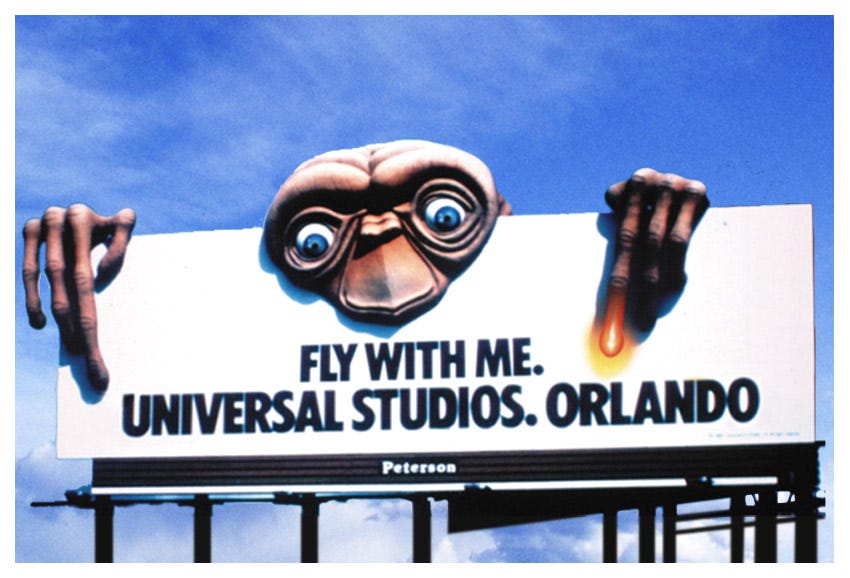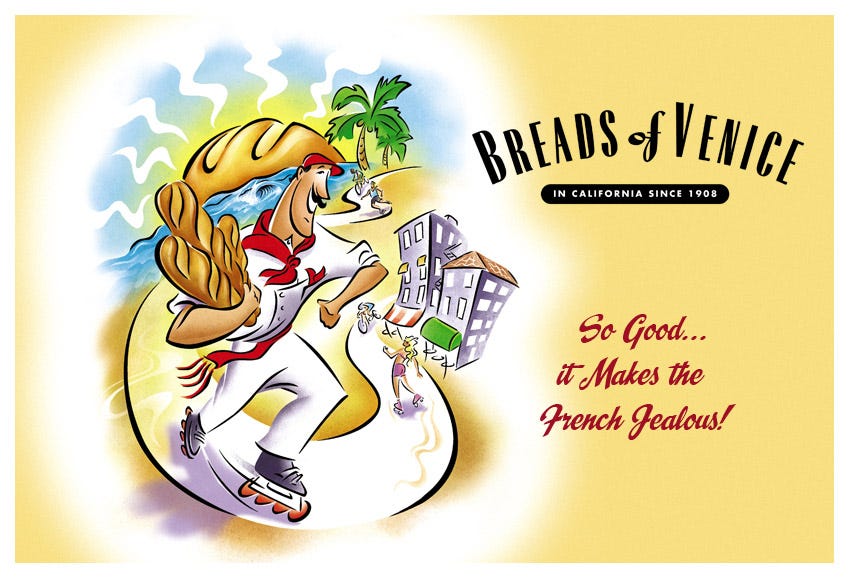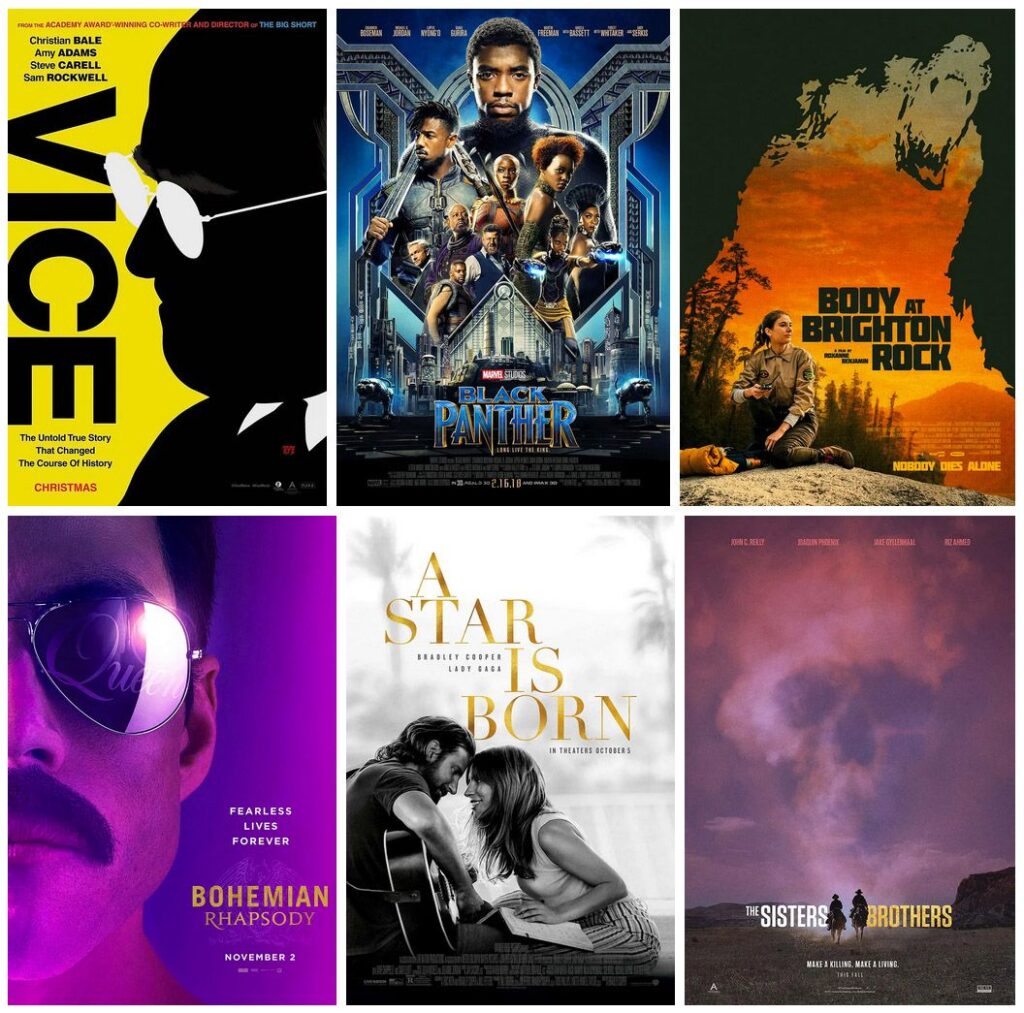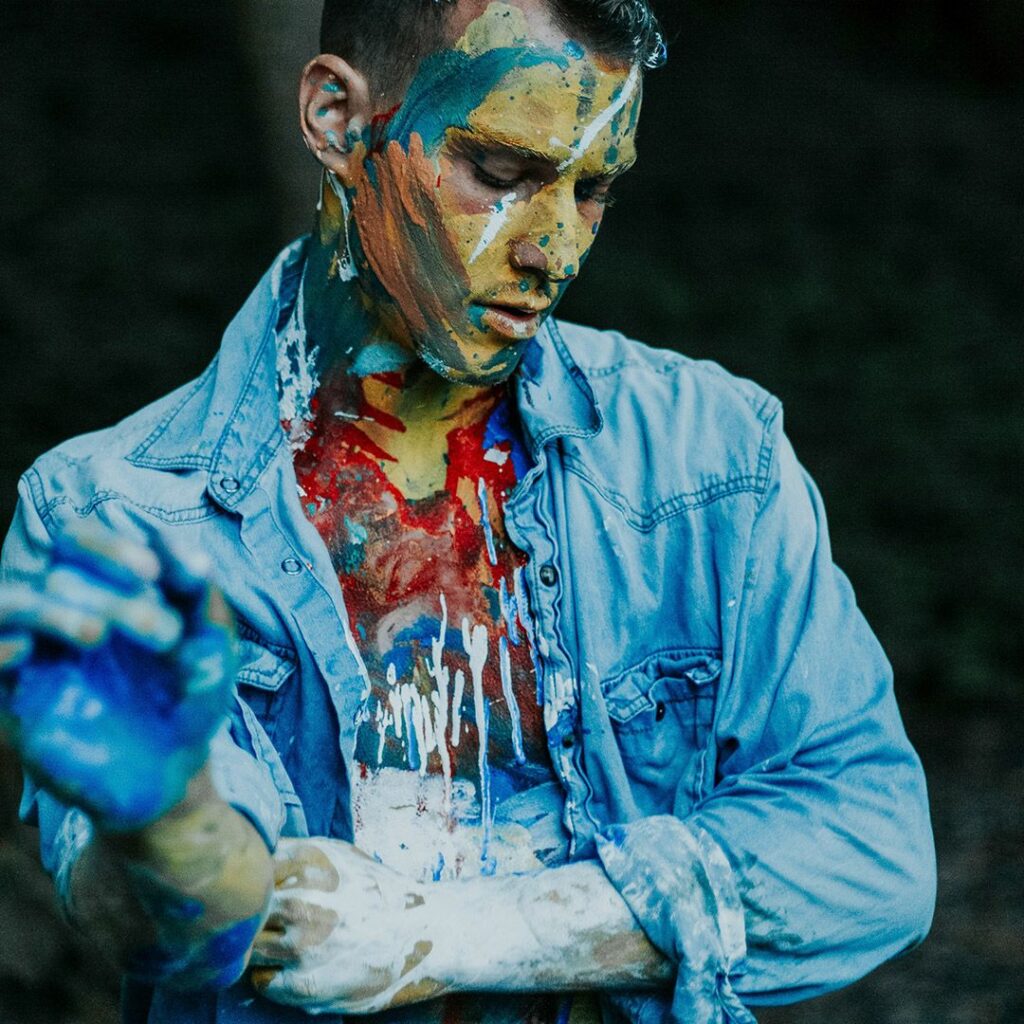How to Trust the Magic in Your Creative World.
When you know it’s great, don’t stop believing.
By Lon Shapiro (originally published on Medium, September 14, 2019)
There is a huge difference between creating art and becoming an immortal.
In 1482, the Duke of Milan commissioned Leonardo da Vinci to create the largest equestrian statue in the world.
By November 1493, Leonard displayed a full-size clay model of the horse and he experienced the Medieval equivalent of going viral.
Unfortunately, the bronze was needed to fight a war, and the clay model was eventually destroyed.
Da Vinci, went on to be considered one of the greatest painters of all time and immortalized as a symbol of curiosity, creativity, and genius.
But this is not Leonardo’s story. This is a story for every artist and writer who creates out of passion, regardless of their stature or compensation.
You may think of billboards as a community eyesore, but I see them as an art form and a mighty challenge to any creative in my industry.
Combine a surprising image with a memorable headline and you can create art that pushes the boundaries of advertising and moves people, like these examples.
Or like this one, the granddaddy of them all.

For me, creating a billboard for Monsters, Inc may have been as close as I will ever come to sculpting the Bronze Horse.
The bright lights of tinsel town beckoned me as part of a group of agencies tasked with designing billboards for Pixar’s groundbreaking animated film.
Back in the good old days before cloud sourcing and the financial meltdown, we got paid a lot of money to come up with 30 or more outdoor concepts by that happy place with the famous mouse that shall remain nameless.
But this was not just a job about money.
It was about my passion for the film.
The cover concept you saw above was my favorite, as Sully — not knowing his own strength — has an emotionally conflicted “oops” moment, while Mike is happily oblivious to everything going on behind him.
To me, it was the perfect summation of the characters in the film, and a gag that would delight kids of all ages.
Like actors, we designers go through an endless series of mind-numbing, soul-crushing “auditions.”
It was so “Hollywood” to hear the Mouse’s marketing people say “love it!” as we did our presentation, but then push our concepts aside, and ask us to do more.
The one comment that stayed with me about my favorite concept was “it doesn’t feel in the character of the film.”
Ultimately, they rejected all of our work and ended up with an image of the movie’s VHS package on a white billboard.
Imagine if Da Vinci’s patron rejected Leonardo’s Horse because he wanted something that looked more like The cartoon sheriff Quick Draw McGraw.
That’s how my rejection felt to me.
Unlike those starving artists of the past who only got recognized after they died, I was given one of those rare moments of vindication only a couple of years afterward.
One of the teachers from my son’s karate studio set up to tour at Pixar for my son (the most talented artist in the family) and I.
By chance, our contact was the artist who originally brought Sully and Mike’s characters to life, so I had to explain my rejected concept.
He loved it.
And that’s all that has ever mattered to me since.
Don’t stop believing.
The essence of being human is the desire for freedom and the ability to express one’s inner truth.
Don’t stop believing in your art, no matter how much work it takes to perfect your craft.
Don’t stop believing in your vision, as you will always find beauty in this often ugly world.
And don’t stop believing in your passion, regardless of whether you toil in anonymity or face intense criticism.
You may or may never gain the world’s acclaim, but if you dare to display your creativity, you are an artist.
You may be asking yourself “how do I know it’s great if the rest of the world doesn’t know about it or rejects it?”
The answer is you will know it when you become 100% focused on your internal creative process, instead of looking for external gratification.
With time and experience, you’ll begin to recognize what’s great because you will have made hundreds of pieces of art.
You can’t help but notice the changes in your abilities over time.
Think about the words of this award-winning video game designer:
“Creativity is not talent but attitude.” — Jenova Chen
Producing great art combines both the talent and technical skills to make something and the determination to explore every space in one’s imagination.
Once again, please allow me to echo Mr. Chen with my own story.
In the advertising business, I’ve made a career of telling bad jokes… hundreds, maybe thousands of bad jokes.
But when one of my jokes hits, it becomes an ad, or a CD cover, or a new brand.
When I left my old design job and started a small ad agency with a partner, he brought in our first client, a Santa Monica bakery that had been in the community since 1908.
They had sold their national brand to a big Canadian conglomerate, but still wanted to make their famous sourdough bread throughout the region, and decided to call their new brand “Breads of Venice.”
Here was their original creative direction:
- Old World, European quality
- Baked in Venice (the beach, not Italy)
- Simple, natural ingredients from a 400-year old recipe
- Healthy & Hip (to attract younger shoppers who didn’t know the old brand)
As my partner and I brainstormed design ideas, a funny thought crossed my mind, so I made a casual joke, saying “haha, a rollerblading baker.”
My partner yelled “that’s it!” and started sketching feverishly.
I had no idea what had happened.
Then, he showed me his sketch.
The clients loved every concept we showed them at our presentation but were knocked out by our hip, tanned baker.
We commissioned an illustrator to capture our vision and a couple of weeks later the new brand was rolled out.

It taught me a huge lesson.
No matter how dumb something may sound inside your head, you’ll never know if it’s good until you bring it out into the light, throw it up against the wall, and see if it sticks.
That accident happened 20 years ago, and that brand has stuck around, even after the original owners sold their company to start another one.
Over that same time, I’ve hit on a lot of good ideas by being willing to play the fool.
With enough time and practice, you’ll reach a point where you know something is good, and it doesn’t matter if your social media followers ignore it or hate it.
In the cases where your client doesn’t like your art, you move on and come up with other ideas and they finally buy one.
There are thousands of great books and scripts that have been optioned but were never made into a movie. That fact in no way diminishes the quality of those stories.
That’s life in the business, but it doesn’t change the fact that a rejected concept can be great.
That’s why I never forgot about that Monsters, Inc outdoor.

The last piece of the puzzle is doing the work to produce great art.
You’ll need both the talent and technical skills to make something and the determination to explore every space in your imagination.
Let’s go back to Mr. Chen’s quote and break down those two components: talent and attitude.
#1: Talent
Talent is the ability to draw, paint, write beautiful prose, code, play an instrument, and any other skill that requires a tremendous amount of practice.
I’ve always been inspired by Malcolm Gladwell’s writings. In “Outliers: The Story of Success,” he explores the idea that there are millions of people we don’t know about who are just as talented as history’s biggest winners. The difference is they never had the benefit of being in the right time and place to succeed.Gladwell introduced us to the concept of the 10,000-Hour Rule, which is a simplified way of expressing how much work is needed to master a skill.¹
Anders Ericsson’s research on the subject resulted in the concept of deliberate practice, which provides a more detailed roadmap to excellence. You don’t become an expert simply by putting in 10,000 hours. They need to be 10,000 hours of practicing the right thing and doing it under increasing levels of competitive pressure.
I’d been using those principles long before Ericsson published his research, as the science of mastery has always been the province of peak performance and sports psychology.
However, talent is not enough.
After all that work and deliberate practice, you can be technically brilliant in your art but still lack the unique vision that makes it powerful and unique.
#2: Creativity (Attitude)
Creativity is about the desire, curiosity, fearlessness, and perseverance to look at an idea or a problem from every possible angle, and then keep searching for new perspectives long after you think you have exhausted all possible ideas.
Trust me, when you have to develop 20 or 30 unique concepts and headlines for a single outdoor campaign, a big part of that effort is simply the will to keep extending oneself.
Sometimes, you do this by walking away from the project and allowing your subconscious to work through the problem. Go walk your dog. Do some gardening. Play ball with your kid. Write a letter. Take a nap.
Engage in any physical activity where you aren’t actively consuming more content, like watching a movie or playing a video game.
Sometimes, you just give up, call it a night and then wake up with an answer the next day.
Sometimes, you extend the search through games that force you to think different ways: talking to people who have no connection to your projects; role-playing; or, going on a field trip to see how the consumer is affected by other artists in your field.
While there are no guarantees any of these techniques will work for you, we do know creativity can come at any time. Just look at the example of Martin Luther, father of the Protestant Revolution.
Hardly a day goes by when I walk my dogs and don’t come back with the desperate urge to write some new story.
I found one book that applies a more rigorous scientific approach to the subject of how to develop new ideas by Edward De Bono: Serious Creativity: Using the Power of Lateral Thinking to Create New Ideas.
De Bono’s concept of finding new ideas through lateral thinking is based on a joke. Literally.
Here’s a key passage:
Humor is by far the most significant behavior of the human brain…
Humor indicates, better than any other mental behavior, the nature of the information system that gives rise to perception. This is a self-organizing information system.
Humor not only clearly indicates the nature of the system but also shows how perceptions set up in one can suddenly be reconfigured in another way. This is the essence of creativity…
— de Bono, Serious Creativity, p. 8
He spends a good portion of the book explaining different exercises to force individuals or groups to approach problems in unusual ways.
Why people need to learn to “empty” the mind
Part of de Bono’s approach involves finding ways for people to put aside their egos and personalities because these artifacts create ingrained patterns of thought and perception.
This parallels the Buddhist practice of emptying the mind.
If you can transcend the limitations in your thinking, you will be surprised by how much more open you are to new perspectives and ideas.
What makes the science of creativity so controversial is that there’s no way to conduct controlled experiments.
Each individual’s psychological makeup is different, and so results and methods will vary.
I can only speak from personal experience, but the difference between critical thinking (which we have been taught to use exclusively) and emptying the mind is unimaginable.
It is a process so completely outside our consciousness, no amount of logic or verbal instruction will help you reach a new place of awareness.
My introduction to this completely different way of thinking was when I was an aspiring professional tennis player.
I had heard that Tim Gallwey’s “The Inner Game” was a powerful and innovative learning tool for tennis players.
I read the book and got nothing out of it.
A few years later, after I had quit the circuit, a friend of mine showed me one of the exercises on the court, a pointed out how my mind was at work as we hit tennis balls.
My new ability to observe my mind at work, and understand where my process was flawed was the equivalent of an LSD trip. I completely changed my approach to playing and teaching and I’ve never gone back.
I show students how logical thought is the thing that prevents them from improving in anything that involves hand-eye coordination, spatial relations, visualization, awareness, and intuition.
Does that sound anything like writing?
To open up to a new consciousness, try yoga, meditation or martial arts. Other books that might help include “Zen and the Art of Archery.” There has even been one about maintaining motorcycles if that’s more your style.
The last part, never giving up your passion, is the hardest, because it can be such a lonely path.
Nobody wants to toil away anonymously or in the face of intense criticism.
I’ve only had to deal with nasty trolls on social media a couple of times and it’s a terrible, no-win situation.
I can’t imagine what women have to endure. Just the ability to stay in the present seems like an impossible task, but they do so to their credit.
There will always be external obstacles you need to navigate if you want to access your creativity.
But you wouldn’t be here if you didn’t have that burning passion to write.
The good news
According to Dr. Alice Flaherty, in her Tedx Talk at Amherst stated that there is a Darwinian aspect to creativity:
“If you produce enough, just like a bug that has a lot of babies, and they’re normally distributed, by chance, you’re going to produce some good ideas if you produce enough of them…”
Spoken like a true scientist, right?
Good luck in your journey, it’s time to queue up Journey.
My concept art from 2001 Monsters Inc. outdoor agency competition and Photo by Kaur Martin on Unsplash


